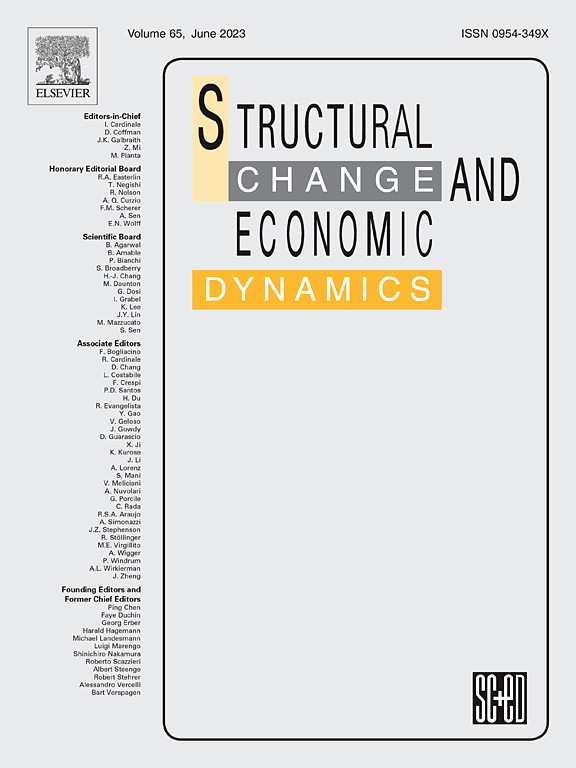Growth regimes, growth drivers and private demand in financialised economies: The case of Spain
IF 5.5
2区 经济学
Q1 ECONOMICS
引用次数: 0
Abstract
Whereas several articles have studied the appearance of different growth regimes in the era of financialisation, other scholars have questioned the validity of this framework for analysing economies after the Great Recession and have proposed instead the analysis of growth drivers as a better approach. In this article, we argue that both perspectives can help each other to better understand economies under finance-dominated capitalism like Spain. Therefore, we analyse the Spanish economy before (2000–2007), during (2008–2013) and after (2014–2019) the Great Recession in two complementary steps. First, using the decomposition approach of national and financial accounts, we identify the emergence of three growth regimes: first, a debt-financed domestic demand-led regime, next, a contractive regime, and, finally, a self-financed domestic demand-led regime. Preliminary descriptive evidence suggests that changing growth drivers contributed to these regime transitions. In a second step, we study how a series of growth drivers related with financialisation are behind the evolution of the components of private demand (households’ and non-financial companies’ spending), and therefore the growth regimes, by estimating different econometric models. Our findings show the significant role played by drivers like income distribution, fiscal policy, and the financial cycle. We conclude highlighting the potential use of growth drivers by future researchers and policymakers to assess growth regimes.
金融化经济体的增长机制、增长动力和私人需求:以西班牙为例
虽然有几篇文章研究了金融化时代不同增长机制的出现,但其他学者质疑这一框架在大衰退后分析经济的有效性,并提出对增长驱动因素的分析是一种更好的方法。在本文中,我们认为这两种观点可以相互帮助,以更好地理解西班牙等金融主导的资本主义经济体。因此,我们通过两个互补的步骤来分析大衰退之前(2000-2007)、期间(2008-2013)和之后(2014-2019)的西班牙经济。首先,利用国民和金融账户的分解方法,我们确定了三种增长机制的出现:首先是债务融资的国内需求主导机制,其次是紧缩机制,最后是自筹资金的国内需求主导机制。初步的描述性证据表明,不断变化的增长驱动因素促成了这些制度的转变。第二步,我们通过估算不同的计量经济模型,研究了与金融化相关的一系列增长驱动因素是如何在私人需求组成部分(家庭和非金融公司的支出)的演变背后,从而在增长机制的演变背后。我们的研究结果表明,收入分配、财政政策和金融周期等驱动因素发挥了重要作用。最后,我们强调了未来研究人员和政策制定者在评估增长机制时可能使用的增长驱动因素。
本文章由计算机程序翻译,如有差异,请以英文原文为准。
求助全文
约1分钟内获得全文
求助全文
来源期刊

Structural Change and Economic Dynamics
ECONOMICS-
CiteScore
9.60
自引率
4.90%
发文量
159
期刊介绍:
Structural Change and Economic Dynamics publishes articles about theoretical, applied and methodological aspects of structural change in economic systems. The journal publishes work analysing dynamics and structural breaks in economic, technological, behavioural and institutional patterns.
 求助内容:
求助内容: 应助结果提醒方式:
应助结果提醒方式:


